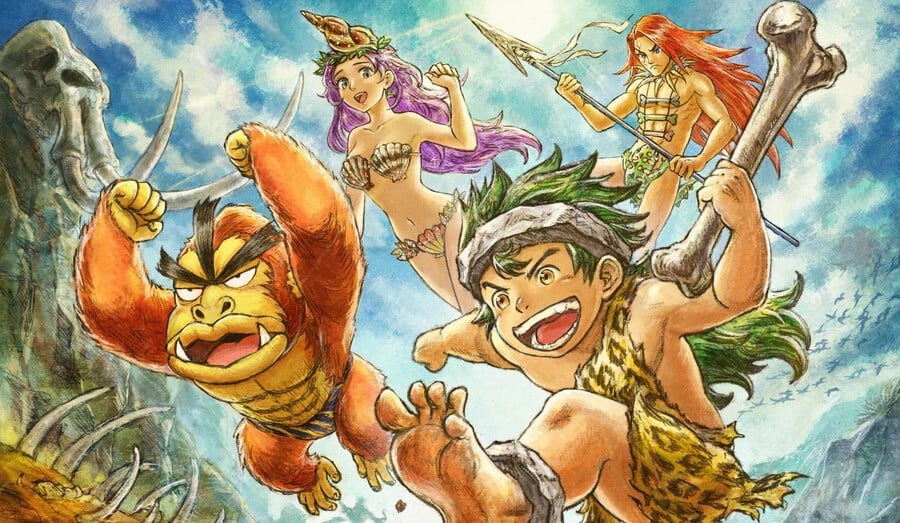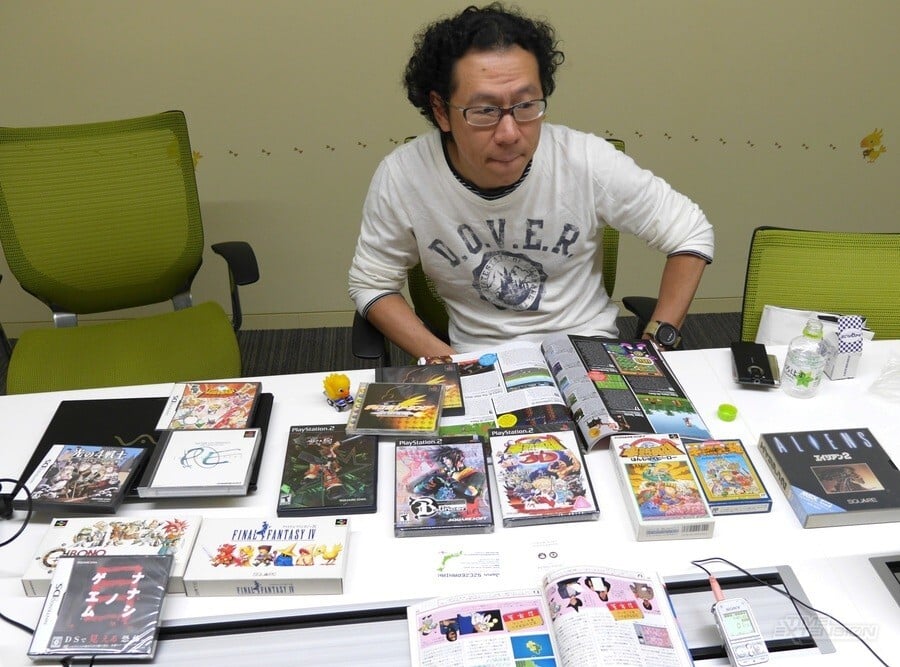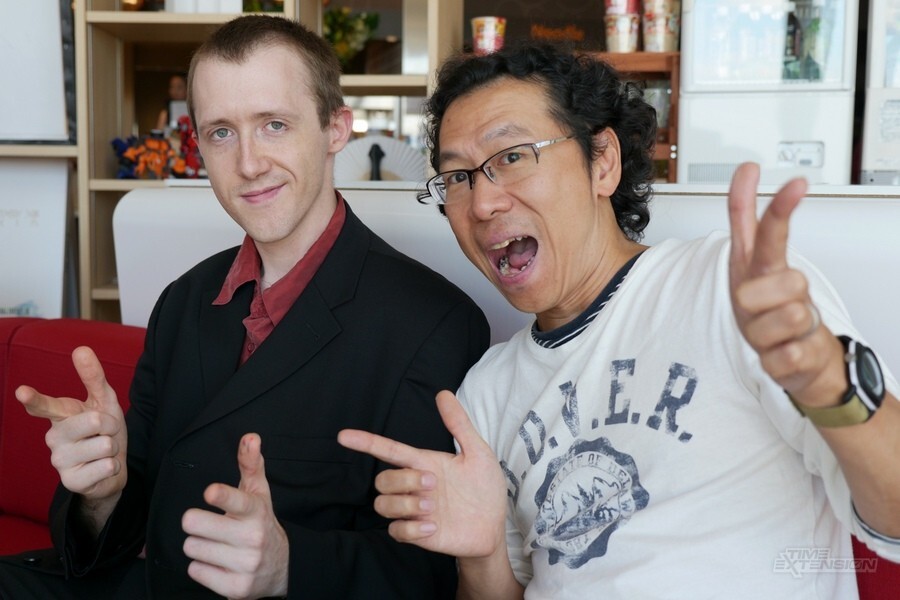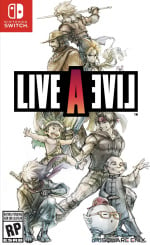
Given the worldwide release of the Live A Live remake in July 2022, we thought it worth looking back at the creation of the original Super Famicom title, released in September 1994. If you've not had the pleasure of playing either the original or remake, our sister site Nintendo Life reviewed the Switch version of Live A Live and it scored it 8/10, giving it much praise.
Released roughly eight years after the original Dragon Quest on Famicom (1986), seven years after the original Final Fantasy (1987), and roughly five months after Final Fantasy VI (April 1994), Live A Live entered a world where many JRPG tropes were already entrenched. It would go against the zeitgeist, however, to forge something new and experimental, which even today feels original. It's interesting to consider that eight years after the template set by Dragon Quest, Live A Live was doing its own thing, and yet 36 years after Dragon Quest, while other JRPGs still slavishly adhere to some of its antiquated ideas, Live A Live's inventive little ensemble of stories continues to stand out.
Which is not to say that every post-Dragon Quest JPRG is derivative. Several tried to evolve the genre and, as we'll show, Live A Live itself influenced what came after, including Chrono Trigger and Parasite Eve. As astutely pointed out by Alana Hagues in her Nintendo Life review:
Early on in Square-Enix's remake it's plain to see the influences the game had on Chrono Trigger. From spanning multiple timelines to the inventive area of effect skills, and right down to the simple, sometimes deep story, director Takashi Tokita clearly used 1994's Live A Live as a springboard for his eventual masterpiece. But Live A Live deserves its own time in the spotlight, and after never officially being localised for the West, now this 28-year-old JRPG is finally getting the chance.
Live A Live was created by Takashi Tokita, whose portfolio is extensive and impressive. Some curated highlights include:
- Aliens: Alien 2 (MSX, 1987) - Graphics
- Rad Racer (NES, 1987) - Graphics
- Final Fantasy (NES, 1987) - Graphics
- Hanjuku Hero (FC, 1988) - Graphics
- Square's Tom Sawyer (FC, 1989) - Graphics
- Final Fantasy Legend (GB, 1989) - Graphics, Character Design
- Final Fantasy III (FC, 1990) - Sound Effects
- Final Fantasy IV (SNES, 1991) - Lead Game Designer
- Hanjuku Hero: ASH! (SFC, 1992) - Director
- Live A Live (SFC, 1994) - Director, Writer, Event Designer
- Chrono Trigger (SNES, 1995) - Director
- Final Fantasy VII (PS1, 1997) - Event Planner
- Parasite Eve (PS1, 1998) - Director, Scenario Writer
- Chocobo Racing (PS1, 1999) - Director
- The Bouncer (PS2, 2000) - Director, Dramatisation
- Nanashi no Game (NDS, 2008) - Producer
Tokita's major claims to fame outside of Japan are of course Final Fantasy IV, Chrono Trigger, and Parasite Eve; three highly acclaimed JRPGs which, each in their own way, broke new ground upon release, and are still loved by Western audiences. Over the years he has been interviewed many times, but almost always with an exclusive focus on these popular titles. It was only in Volume 3 of The Untold History of Japanese Game Developers, during a four-hour interview, that he was able to go in-depth on his lesser-discussed creations. It resulted in over 11,000 words, of which we present some highlights here.

"I don't know that I've ever had a chance to go through my entire career like this! I never actually intended to make a career out of games - it was originally just a part-time job," laughs Tokita, looking over all his games spread across the table. "At the time I was into anime and manga, and discovered voice acting. So I started performing in hopes of becoming a voice actor. I was a trainee in a theatre group in high school; after I graduated I moved to Tokyo in hopes of getting solo work. It was when I was looking for a part-time job to support myself that I found a company that was recruiting videogame designers. I had wanted to do something creative for my part-time job, and I really enjoyed drawing, so I thought making games would be interesting, and went in for an interview."
Of all the interviewees in The Untold History books, Tokita was one of the coolest and most fun to chat with, having a sharp recollection of events and a genuine passion for games creation. He's also not afraid to lampoon his own creations or speak candidly. Tokita went on to describe his first job creating graphics for various computer games at ZAP Corporation, which we previously showcased twice when quoting Manabu Yamana. Tokita and Yamana worked alongside each other at ZAP and, after they both left, the two men would go on to helm rival series Final Fantasy and Dragon Quest respectively.
Tokita worked at ZAP for two years, but the workload was gruelling, and he felt his creativity being stifled. "Around that time I saw a commercial for Square's King's Knight for the Famicom," explains Tokita, describing his leaving. "I was really impressed with its graphics so decided to take an interview with Square. I had two years of experience at that point, so I was pretty confident. One of the programmers I worked with at ZAP was Manabu Yamana. Kan Naito was also a programmer there. It's quite a funny coincidence that just as I was leaving to join Square, they were both joining a company called Chunsoft, to make Dragon Quest on Famicom for Enix."
Tokita joined Square during its ascendance into what was the company's first golden age, moving beyond poorly selling computer games and focusing instead on major role-playing hits for consoles. During this time he worked alongside all the greats, including Hironobu Sakaguchi, Nobuo Uematsu, Nasir Gebelli, and Hiromichi Tanaka.
"Actually, my very first Square game was this here, Aliens: Alien 2," says Tokita, picking up his personal copy from the table. "I joined Square and one of the reasons they decided to recruit me was because they wanted to develop this for the MSX, and I had experience doing graphics for MSX. At that time, the planner for the game was Hiromichi Tanaka, the designer on Final Fantasy II and III, and also producer for Secret of Mana and Final Fantasy XI. The music and sound effects were done internally by Nobuo Uematsu. We had a lot of freedom. I was only 20 years old, so that was quite exciting for me!"

Before we dive into Live A Live itself, it's worth noting the Hanjuku Hero series, since this was actually the start of Tokita's experimentation with JPRG concepts. A small collection of surreal and comedic RTS titles, featuring an anthropomorphic egg hero, none have officially left Japan. They rely heavily on silly humour and language puns, making localisation difficult (fan translations exist though). The later PS2 titles resemble Sega's Dragon Force.
"The impetus for the Hanjuku Hero series was that RPGs like Dragon Quest and Final Fantasy were becoming big hits," begins Tokita, "so we thought it might be interesting to see if strategy / tactics games could become the next breakout genre. We played a lot of Western computer games. One was The Ancient Art of War, which had incredible real-time graphics, and that was a major inspiration for us." Keep in mind Tokita's explanation, since although Live A Live has a turn-based battle system, it's more focused on tactics and strategy than the preceding Final Fantasy IV which Tokita developed.
When we finally get around to discussing Live A Live, we unashamedly describe it as a masterpiece. We had to know more about how and why it was made. "Thank you," says Tokita, impressed with how much a foreigner knew about a game which never (at the point the interview was conducted) officially left Japan.
"We had just completed Final Fantasy IV, and RPGs had become a massively popular genre," he continues. "The other factor was the increase in memory size. We'd added in elements of various movie genres to Final Fantasy IV and V, particularly from sci-fi films and westerns, and I thought it might be interesting to isolate each of those genre elements and make a little story around them. Doing it in an omnibus format would be a way to really emphasise the strengths of each genre. We were developing Chrono Trigger more or less concurrently, so we were experimenting a lot with how to take advantage of additional memory, as well as how best to approach long-form storytelling. Another major inspiration was shattering the story-map-battle structure of RPGs. We wanted to have each chapter break that structure in different ways."







